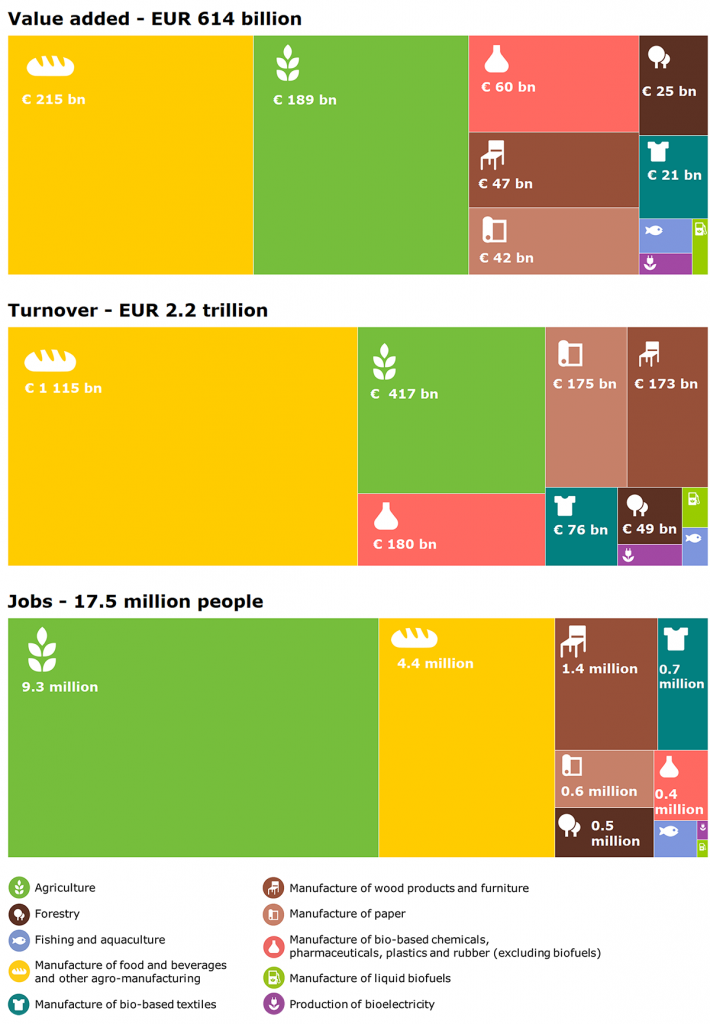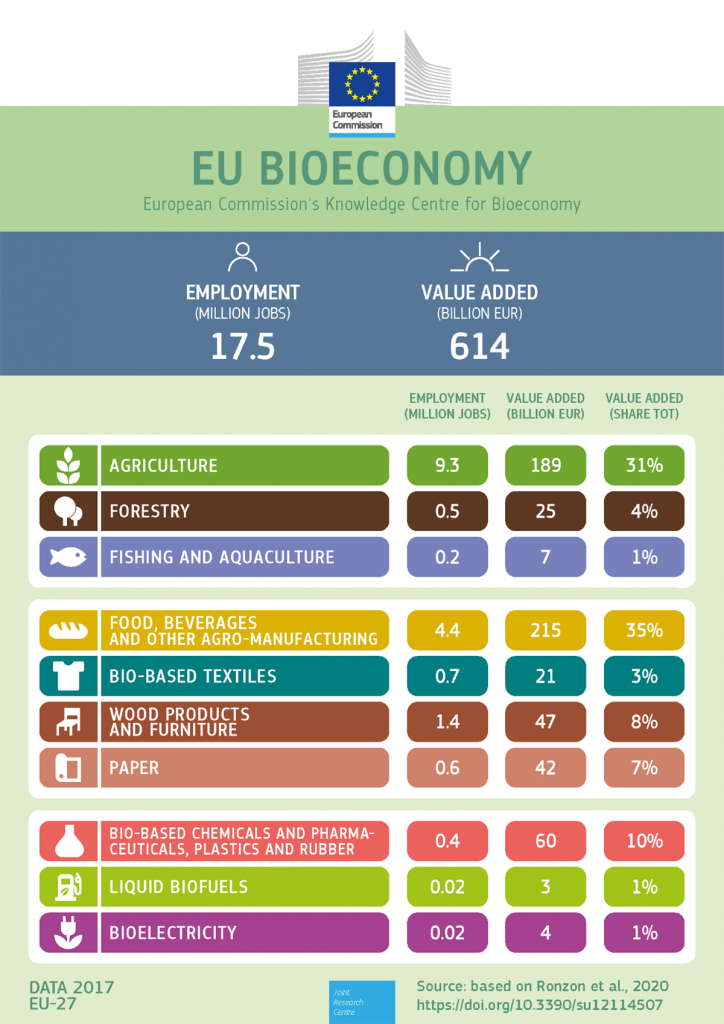Fresh report of the value of the EU Bioeconomy is prepared by the JRC for the European Commission’s Knowledge Centre for Bioeconomy (KCB). The report analyses the latest data on employment, value added and the turnover generated by different bio-based sectors of the EU bioeconomy.
The EU bioeconomy employed 17.5 million people in 2017 (EU-27), which represents 8.9% of the total labour force. It also created up to EUR 614 billion of value added, which represents 4.7% of GDP.

The brief also looks at the differences between individual sectors and Member States based on an analysis of socio-economic indicators, such as employment and labour productivity, and their evolution over time.
The indicators analysed for the period 2008-2017 show a steep rise in value added in 2017 in all sectors, but especially in the bio-based pharmaceutical sector (18%) and in agriculture (12%).
For the first time during the 10 years monitored, a slight increase in the number of people employed has also observed for 2017 (+126 000 more people compared to 2016). This increase in employment reverses the steadily declining trend observed since 2008, which had been driven mainly by the restructuring of the agricultural sector (which accounts for more than half of the bioeconomy’s employment). However, employment numbers in the agricultural sector continue to fall.
Even though the socio-economic impact of the COVID-19 pandemic on the European bioeconomy is not yet captured in detail (due to the lack of complete official statistics), the data available so far indicate that employment in the primary sectors (agriculture, forestry and fishing) fell by around 4.2% during the first quarter of 2020 compared to the same period of 2019.
By contrast, the gross value added of the primary production sectors increased by 0.1% during the same period.
The analysis of specific socio-economic indicators highlights four distinct groups of Member States in terms of the concentration of their labour market and their labour productivity.
These range from Member States specialised in bio-based sectors that are labour intense but have a lower labour productivity, such as agriculture (e.g. Bulgaria and Romania), to those whose labour market is less concentrated in bioeconomy sectors but for which high-productivity sectors play a more important role (e.g. Finland, where the bio-based chemicals sector has grown significantly in recent years).
This new brief is an update of a 2018 publication that was used to inform the preparation of the 2018 European Bioeconomy Strategy.
Knowledge about the socio-economic trends in the EU bioeconomy is important both to inform new policies and to monitor the progress and impact of current policies.
The brief is complemented by an infographic “Bioeconomy employment and value added: 2017 data”.
The brief and infographic are mainly based on the peer-reviewed publication by Ronzon et al., 2020 (Developments of Economic Growth and Employment in Bioeconomy Sectors across the EU), prepared by the JRC and the nova institute, supported by the H2020 BioMonitor.

Further information
- KCB Brief on jobs and growth of the EU bioeconomy 2008-2017
- Bioeconomy employment and value added: 2017 data – Infographic
- Knowledge Centre for Bioeconomy (KCB)
- Developments of Economic Growth and Employment in Bioeconomy Sectors across the EU
Source
NC-Partnering newsletter 11/20, 2020-11-30.
Supplier
European Commission
European Union
Joint Research Centre (JRC)
NC Partnering Ltd
nova-Institut GmbH
Share
Renewable Carbon News – Daily Newsletter
Subscribe to our daily email newsletter – the world's leading newsletter on renewable materials and chemicals










